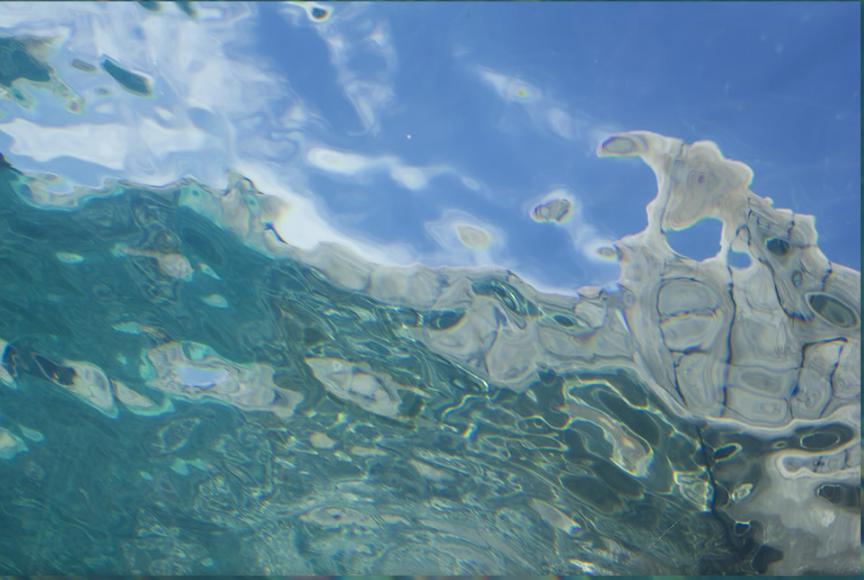OPOD - Fish eye views
OPOD - Fish Eye Views: A Unique Perspective on the Sky
Have you ever wondered how the sky appears to fish, sea lions, or underwater swimmers? It turns out their view of the sky is quite different from ours. While we perceive the sky as a vast, wide expanse, for aquatic creatures, it takes on the form of a narrower, wave-ragged circle overhead on the water's surface. In this article, we will delve into the fascinating phenomenon of fish eye views and explore the optical distortions that shape their perception of the world above.
When light rays enter water, they undergo a process called refraction, causing them to change direction. This refraction results in a steeper angle of light rays as they enter the water. Rays that skim almost parallel to the water's surface are refracted the most, descending at an angle of approximately 49 degrees to the vertical. Consequently, the entire sky is compressed into a narrow 98-degree wide circle from the fish's perspective.
It is important to note that this compression is not uniform. If the water were completely still, objects near the sky's horizon would appear somewhat squashed to a fish. The irregularities in the water's surface contribute to variations in the compression of the sky circle, creating a unique visual experience for aquatic creatures.
Beyond the boundaries of this compressed sky circle, fish are greeted with a reflection of the sea bed and objects present in the water. The water's surface acts as a mirror, producing a reflection that extends beyond the visible sky circle. This reflection is a result of total internal reflection, a phenomenon where upward-going rays within the water are completely reflected at an angle greater than 49 degrees to the vertical. This complete internal reflection is distinct from conventional mirrors and finds applications in various optical devices such as binocular prisms.
The presence of waves further adds complexity to the fish's view of the sky. Waves cause the 98-degree sky circle to become irregular, resulting in shifting closed rings of light and color beyond its boundaries. These rings are reminiscent of skypools, forming as a consequence of the wavy surface producing multiple images of the seabed and surroundings. The interplay between the water's movement and the incoming light gives rise to these mesmerizing visual patterns.
In addition to the distorted sky circle and the rings of light, sunlight penetrating deep into the water undergoes refraction and takes on sculpted shapes known as caustic sheets. These caustic sheets intersect with sea lions, creating sharply focused bright lines that appear to dance upon their bodies. This familiar phenomenon demonstrates the intricate interplay between light and water, offering a captivating spectacle to those fortunate enough to witness it.
In conclusion, the fish eye view of the sky presents a unique perspective on our familiar celestial expanse. Through refraction, compression, and total internal reflection, aquatic creatures experience a visually distinct world that is shaped by the properties of water. The irregularities caused by waves further enhance this visual experience, giving rise to shifting rings of light and color. The interplay between light and water continues to captivate us, offering glimpses into the wonders of our natural world.

Fish World View - Erick Anderson caught the sky as a fish sees it from a tunnel at the sea lion sound at St. Louis Zoo.

Our sky is wide, a seeming huge flattened dome stretching out to infinity at its horizon extremities. Not so a fish�s, or a sea lion�s or an underwater swimmer�s. Their sky is a narrower wave ragged circle overhead on the water�s surface.
Light rays are refracted when they enter water to make a steeper angle to the surface. Rays entering the water after almost skimming parallel to its surface are refracted most and they descend at an angle of 49� to the vertical. The whole sky is compressed into a 98� wide circle.
The compression is not regular. If the water was ever still a fish would see objects near to the sky horizon somewhat squashed.
Outside the sky circle the fish sees a reflection of the sea bed and objects in the water.
The surface totally internally reflects upward going rays within the water making an angle of more than 49° to the vertical. Unlike metallic or other mirrors, total internal reflection is 100% complete - it is used to effect in binocular prisms and other optics.

Waves make the 98° sky circle irregular.
Outside the circle there are sometimes shifting closed rings of light and colour. These are a watery counterpart of skypools. The wavy surface produces multiple images of the seabed and surroundings to form the rings.

Sunlight penetrating deep is refracted and sculpted into caustic sheets. Where they intersect sea lions we see the familiar sharply focussed bright lines playing on their bodies.
Note: this article has been automatically converted from the old site and may not appear as intended. You can find the original article here.
Reference Atmospheric Optics
If you use any of the definitions, information, or data presented on Atmospheric Optics, please copy the link or reference below to properly credit us as the reference source. Thank you!
-
<a href="https://atoptics.co.uk/blog/opod-fish-eye-views/">OPOD - Fish eye views</a>
-
"OPOD - Fish eye views". Atmospheric Optics. Accessed on December 25, 2024. https://atoptics.co.uk/blog/opod-fish-eye-views/.
-
"OPOD - Fish eye views". Atmospheric Optics, https://atoptics.co.uk/blog/opod-fish-eye-views/. Accessed 25 December, 2024
-
OPOD - Fish eye views. Atmospheric Optics. Retrieved from https://atoptics.co.uk/blog/opod-fish-eye-views/.